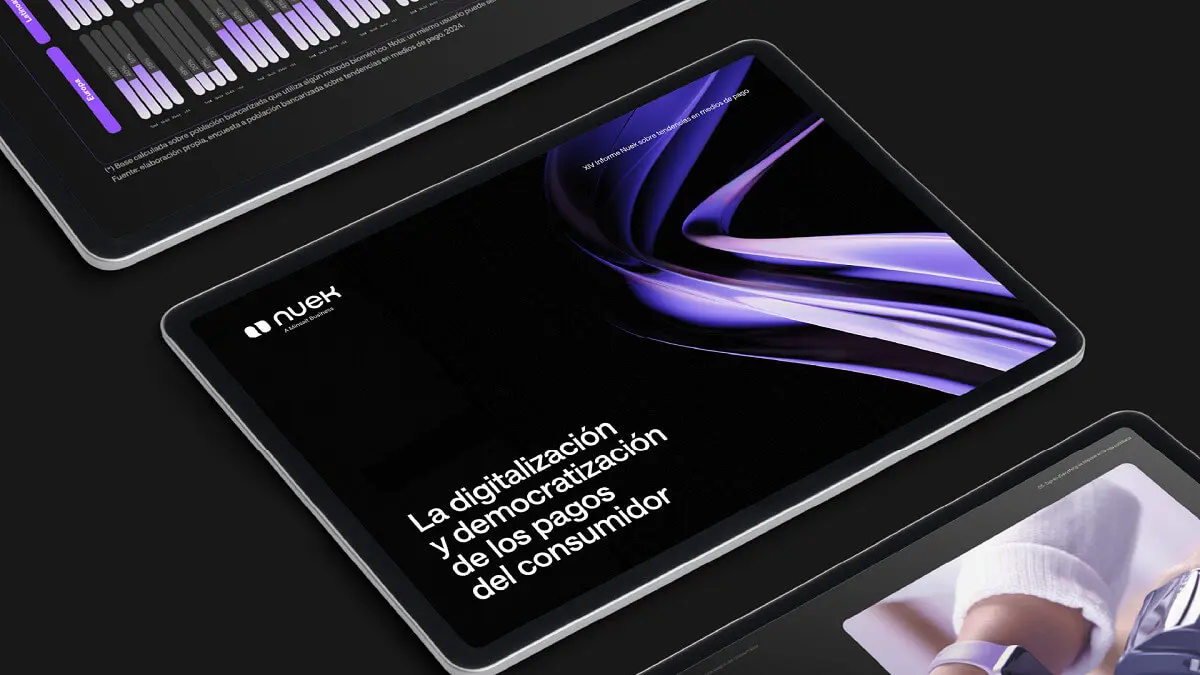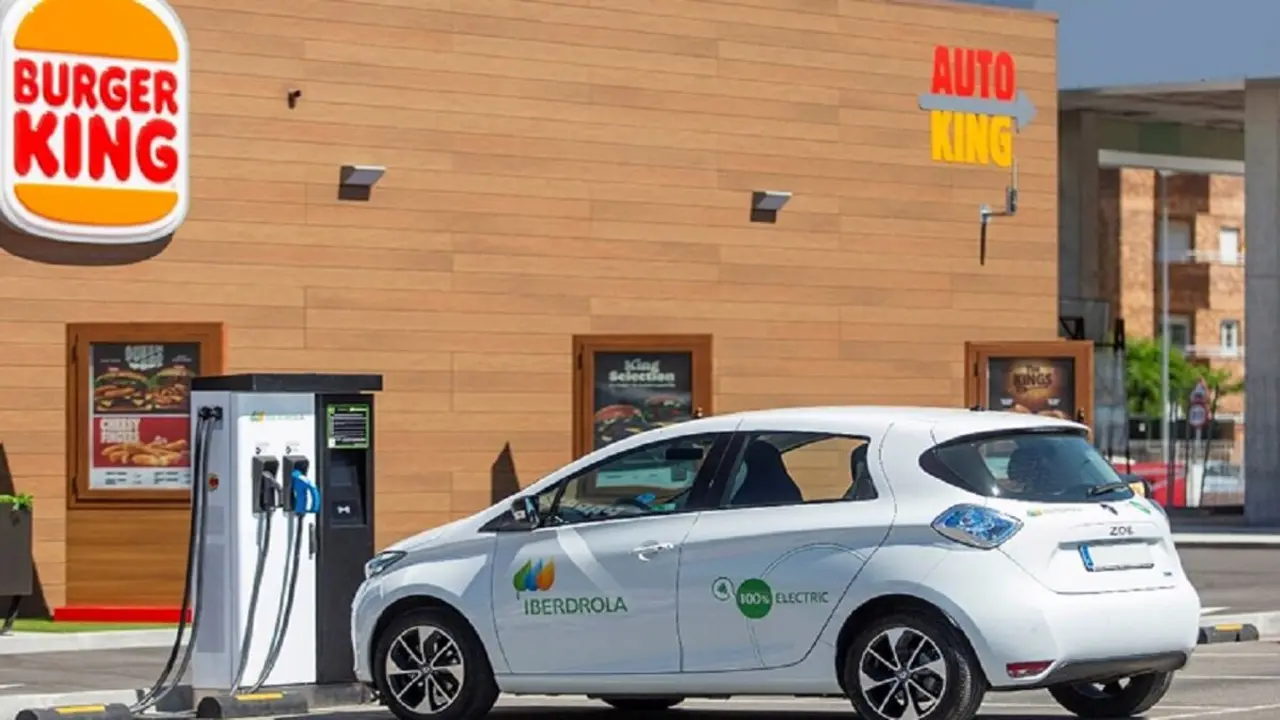Cash loses ground in Spain

- Security: unique digital identity, biometrics
- Payment data in other countries and regions
- Five challenges that the industry has yet to resolve
Spain ranks among the countries with the highest use of debit cards for in-person and online payments. 83% of users now use debit cards for online payments, with a notable increase in the use of smart devices. This is revealed in the new report by Nuek, a technology company specialising in payment infrastructure owned by Minsait (Indra Group), which identifies the main gaps that still hinder a truly universal, secure and frictionless financial experience.
Spain's commitment to card use is also confirmed in face-to-face payments where, as the study shows, 92% of the banked population uses debit cards and 75% uses credit cards. It is worth noting that 48% of the population reports having had difficulties using their preferred payment method, a percentage that, although high, is one of the lowest rates in the study.
The study, ‘The digitisation and democratisation of consumer payments’, presented by the company, was conducted in collaboration with AFI (Analistas Financieros Internacionales) and is based on more than 5,200 surveys carried out in Argentina, Brazil, Chile, Colombia, Ecuador, Mexico, Peru, the Dominican Republic, Uruguay, Spain, Italy, Portugal and the United Kingdom. The company notes that while the use of digital payments continues to grow, structural barriers remain that prevent a truly universal, secure and interoperable experience for millions of people.
'When, despite advances, a third of the population still cannot carry out their payment transactions as they would like, the problem is not one of technology. It is one of design. At Nuek, we believe that true innovation in payments is not about offering more options, but about offering an experience that simply works, without thinking, without adapting, without slowing down,' says Javier Rey, CEO of Nuek.
Security: unique digital identity, biometrics
According to the study, Spanish consumers are moving towards faster, safer and more digital payments. With this in mind, 60% of the banked population in Europe, including Spain, already shows a favourable predisposition to using a unique digital identity to pay, identify themselves and carry out financial transactions. Overall, 70% of Latin American users and 60% of European users would be willing to use a single credential to pay, identify themselves and carry out financial transactions or access services. This paradigm shift heralds a convergence between the worlds of identity, authentication and transactions.
This trend is part of the drive towards the European Digital Identity Wallet (EUDI Wallet), which seeks to consolidate an interoperable and secure digital identity across the European Union. It is expected that by 2030, 80% of citizens and businesses will adopt this solution. From a business perspective, 47% of business leaders surveyed believe that a single digital identity is key to a frictionless payment experience, although they admit that certain challenges still exist, such as interoperability between online services and platforms, and the need for clear and effective regulation to enable its deployment.
Another major change identified in the report is the rise of passkeys and the consolidation of biometrics as an authentication standard. Sixty-three per cent of users surveyed in Europe and Latin America with smart devices currently use their fingerprint or face to authorise payments. In Latin America, this preference is associated with a feeling of greater security. In Europe, speed and convenience are more important.
This change is occurring in parallel with the advancement of technologies such as tokenisation, which replaces actual card data with a unique code — the token — that is transmitted during the transaction.
According to the report, one in three e-commerce transactions in Spain is already tokenised, which has reduced fraud by up to 60% and increased the authorisation rate by 5%. Security is no longer an obstacle but a facilitator of experience.
Payment data in other countries and regions
The report confirms that cash, although in decline, remains dominant in contexts where there are no real alternatives, such as in Colombia and Ecuador, where more than 60% of face-to-face payments are still made in cash. In addition to Spain, debit cards are consolidating their position as the main payment method in markets such as Portugal, Chile and Uruguay, while in Mexico and Brazil they are competing with credit cards. Account payments are also growing strongly, thanks to solutions such as Pix (Brazil), MBWay (Portugal) and Bizum (Spain). In Argentina, Colombia and Peru, instant transfers are beginning to establish themselves as a common option.
Contactless payment is becoming the norm. More than 60% of users with smart devices use it regularly. But the phenomenon goes further: 70% of users in countries such as Colombia, Mexico and Peru want to extend this model to other actions, such as confirming a transaction, sending money or linking a new card with a single touch.
This new way of interacting with money is not only faster. It is more intuitive, more accessible and more aligned with the mobile and digital habits of the majority. What was until recently a technological innovation is now becoming a basic consumer expectation.
Five challenges that the industry has yet to resolve
Despite the progress made, the report identifies five structural frictions that the industry must still resolve if it is to deliver on the promise of a truly universal, secure and frictionless payment experience.
First, access remains uneven: having digital payment methods does not guarantee that they can be used in all contexts.
Second, security is still perceived as a friction point: although technologies such as biometrics and tokenisation are already improving the experience, many users still face slow or unintuitive processes when paying.
Third, integration is lacking: payment systems do not always work the same way across countries, banks or platforms, forcing users to adapt.
Fourth, paying is increasingly a form of identification, and that requires clear rules and reliable technology.
And fifth, the experience is not yet invisible: the goal is no longer just to pay contactless, but without obstacles, without interruptions, without effort.










